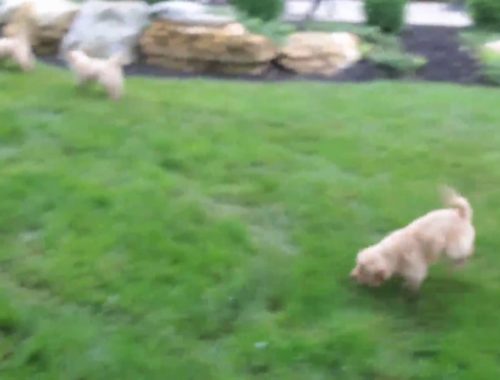FREE TRIAL – CLICK HERE → http://todosobreperros.online/go/onlinedog
Depending on the severity of the fracture, the repair may involve various techniques and implants. While some fractures may require only a splint to heal properly, others may need pins, plates and screws. Below are some of the more common fractures seen in puppies.
Elbow fractures in puppies.
The humerus is the bone of the arm, between the shoulder and the elbow. Trauma to this bone can cause a fracture of the outside part of the elbow (called the lateral condyle). Jumping from furniture or from a person’s arms and landing incorrectly is most often the cause. Repairing this fracture usually involves a combination of pins and screws.
Radius-ulna fractures in puppies.
The bones of the forelimb are the radius and ulna. This is a common fracture that typically occurs when a puppy jumps from furniture or someone’s arms. Most often, both bones break right above the wrist. The vast majority of situations require a plate and screws to correctly realign and heal this fracture. Splints alone typically are a recipe for failure in small dogs, because their blood vessels (providing nutrients) are different than in larger breeds.
Toe fractures in puppies.
Broken toes commonly stem from falling or jumping from a high surface, such as furniture. This may also result from being stepped on accidentally by a human. Toe fractures often require pins to help the pieces line up and heal correctly, as well as a splint.
Hip fractures in puppies.
Fractures of the hip stem from a traumatic fall. A broken hip might be repairable, usually with pins. Other times, surgery is performed to remove the head of the femur, i.e. the ball of the hip joint.
Tibial crest fractures in puppies.
A dog’s tibia is similar to our shin bone. The tibial crest is the top, front part of the bone. A tibial crest fracture can occur in a puppy after trauma, such as a fall. Pins are required through the broken portion to repair this type of fracture.
Growth plate fractures in puppies.
Growth plates are the areas at the ends of growing bones that contain dividing cells, enabling the bones to become longer as the puppy gets older. As the puppy reaches puberty, the growth plates eventually close.
Until this happens, the growth plates are soft and easily injured. Two injuries can happen:
1. A fracture through the growth plate.
2. A “crushing” injury, which can lead to a shorter bone or a deformed leg.
Surgery is most often recommended to repair a fracture, although a splint may work in some cases. Not much can be done about a crushing injury, and it is rarely diagnosed immediately. The end result (a twisted leg) is most often diagnosed weeks to months after the injury.
→ http://todosobreperros.online/go/onlinedog ← START Your FREE TRIAL Now
source



